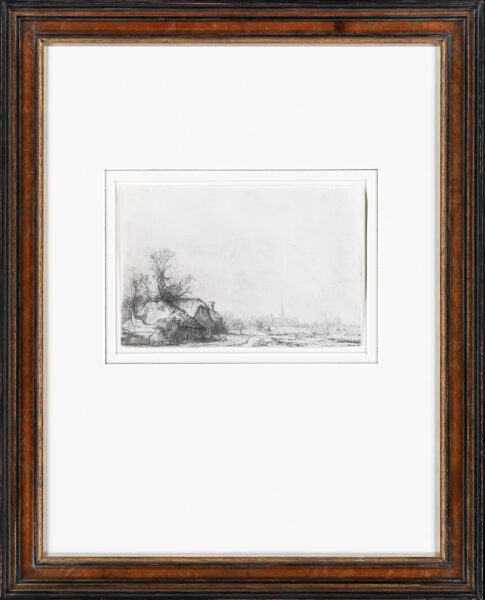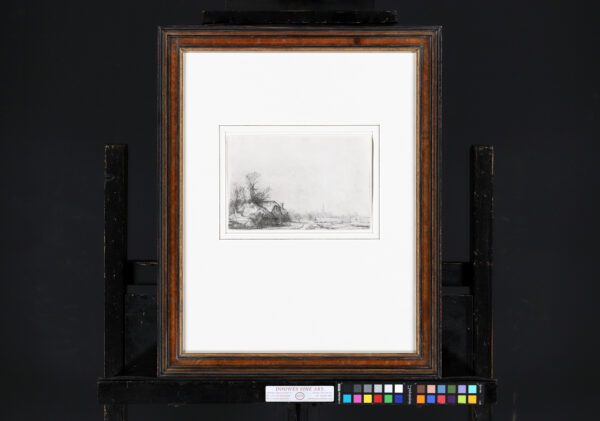“Cottage beside a Canal with a view of Ouderkerk”, c. 1641
Etching and drypoint: 13,9 x 20,8 cm;
Trimmed to the platemark
Oops! We could not locate your form.
Notes
During his lifetime, Rembrandt’s extraordinary skills as a printmaker were the main source of his international fame. Unlike his oil paintings, prints travelled light and were relatively cheap. For this reason, they soon became very popular with collectors not only within, but also beyond the borders of the Netherlands.
Efforts have been made to identify the location of this view, and Diemen and Ouderkerk have been put forward as likely candidates. It may in fact be a capriccio, an amalgamation of the two. The print is essentially a study in how to represent a building close to the viewer, with a distant landscape beyond. This is a more successful attempt than the previous ones, where poor control of the biting process meant that there was little middle tone between deeply etched foreground and a very faint horizon. Here there is a careful, gradual recession, enhanced by the diagonal placement of the cottages that lead the eye to the distant view, rather than the frontal placement in the landscapes of 1641. The recession is accentuated by the meandering road leading directly away from the viewer. The skilful use of sulphur-tinting further serves to unite the whole, the near and the far, into a harmonious and evocative recreation of the countryside on a damp, overcast day. Some commentators have even speculated whether the scene is shown during a flurry of snow.
Literature
Bartsch 228; Hind 212;
The New Hollstein, 2013, no. 202: only state
Plate not in existence – with Nowell-Usticke (1967): R – A scarce print
Provenance
- With E. & R. Kistner, Nuremberg.
- Private Collection, Switzerland;
- Private Collection, Switzerland, 1990.
- Christie’s London
- Private Collection, The Netherlands
A very good, atmospheric impression of this delicate landscape the sulphur-tinting in the sky and on the roof printing prominently





